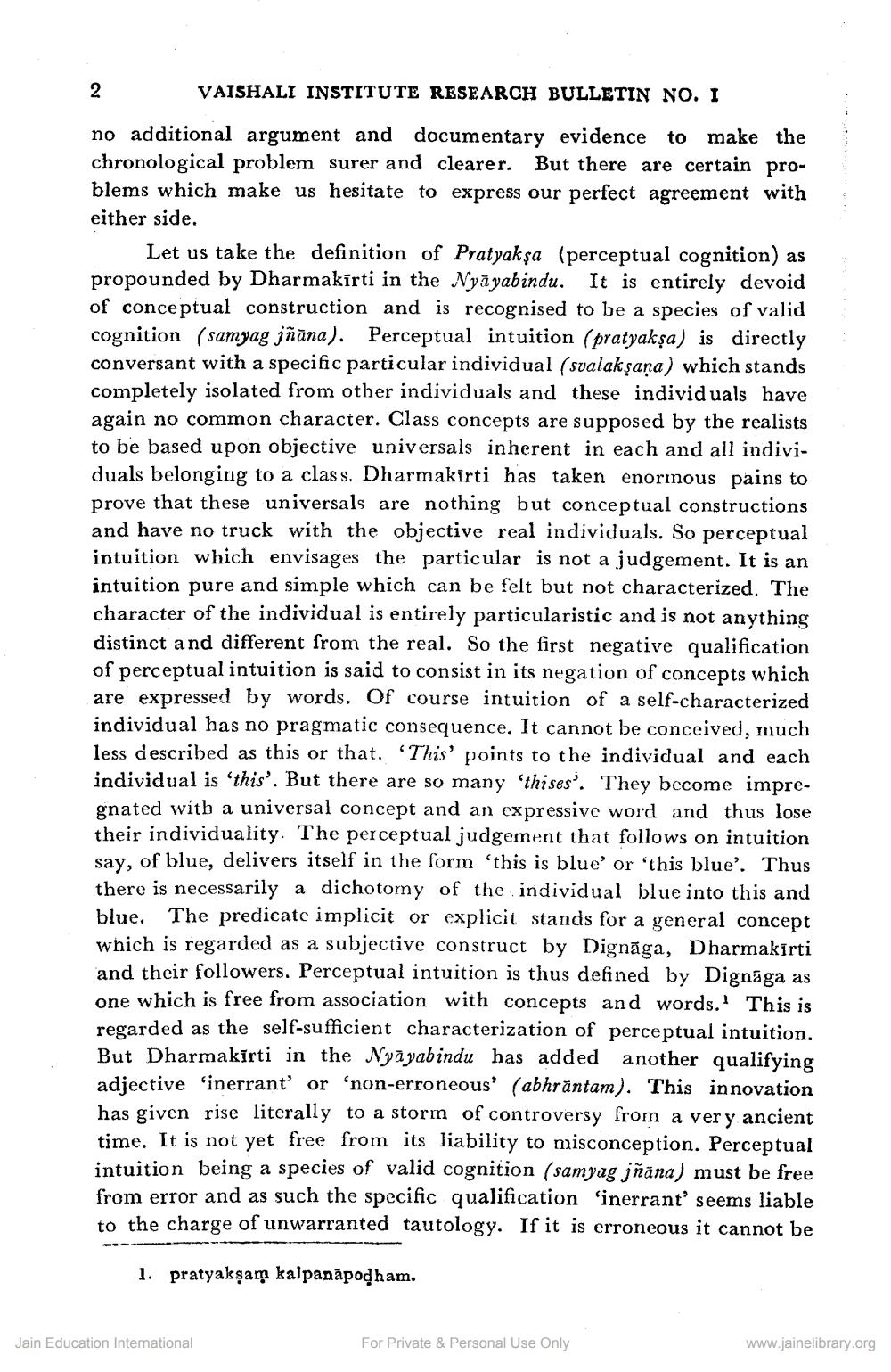________________
VAISHALI INSTITUTE RESEARCH BULLETIN NO. I
no additional argument and documentary evidence to make the chronological problem surer and clearer. But there are certain problems which make us hesitate to express our perfect agreement with either side.
Let us take the definition of Pratyakşa (perceptual cognition) as propounded by Dharmakirti in the Nyāyabindu. It is entirely devoid of conceptual construction and is recognised to be a species of valid cognition (samyag jñāna). Perceptual intuition (pratyakşa) is directly conversant with a specific particular individual (svalakşaņa) which stands completely isolated from other individuals and these individ uals have again no common character. Class concepts are supposed by the realists to be based upon objective universals inherent in each and all individuals belonging to a class. Dharmakirti has taken enormous pains to prove that these universals are nothing but conceptual constructions and have no truck with the objective real individuals. So perceptual intuition which envisages the particular is not a judgement. It is an intuition pure and simple which can be felt but not characterized. The character of the individual is entirely particularistic and is not anything distinct and different from the real. So the first negative qualification of perceptual intuition is said to consist in its negation of concepts which are expressed by words. Of course intuition of a self-characterized individual has no pragmatic consequence. It cannot be conceived, much less described as this or that. This points to the individual and each individual is 'this'. But there are so many thises'. They become impregnated with a universal concept and an expressive word and thus lose their individuality. The perceptual judgement that follows on intuition say, of blue, delivers itself in the form 'this is blue' or 'this blue'. Thus there is necessarily a dichotomy of the individual blue into this and blue. The predicate implicit or explicit stands for a general concept which is regarded as a subjective construct by Dignāga, Dharmakirti and their followers. Perceptual intuition is thus defined by Dignāga as one which is free from association with concepts and words. This is regarded as the self-sufficient characterization of perceptual intuition. But Dharmakīrti in the Nyāyabindu has added another qualifying adjective 'inerrant' or 'non-erroneous' (abhrāntam). This innovation has given rise literally to a storm of controversy from a very ancient time. It is not yet free from its liability to misconception. Perceptual intuition being a species of valid cognition (samyag jñāna) must be free from error and as such the specific qualification 'inerrant' seems liable to the charge of unwarranted tautology. If it is erroneous it cannot be
1. pratyakşam kalpanāpodham.
Jain Education International
For Private & Personal Use Only
www.jainelibrary.org




